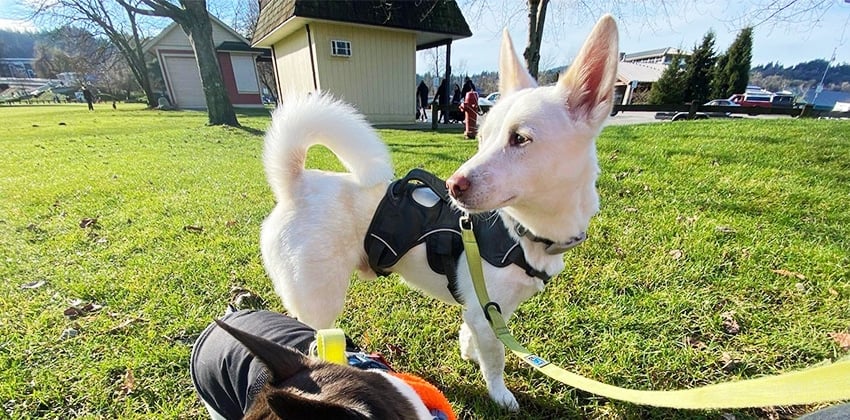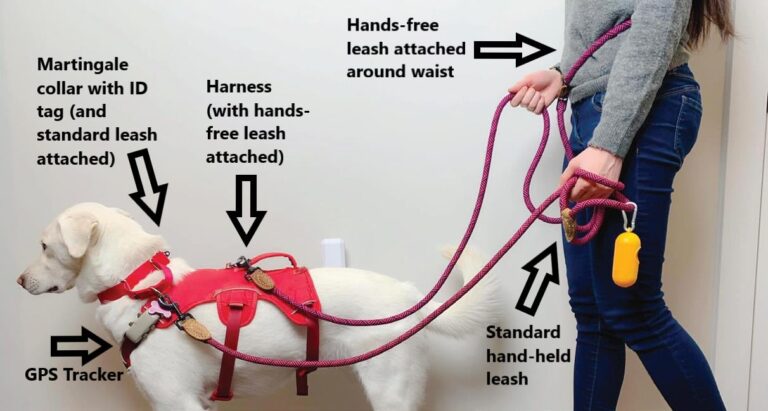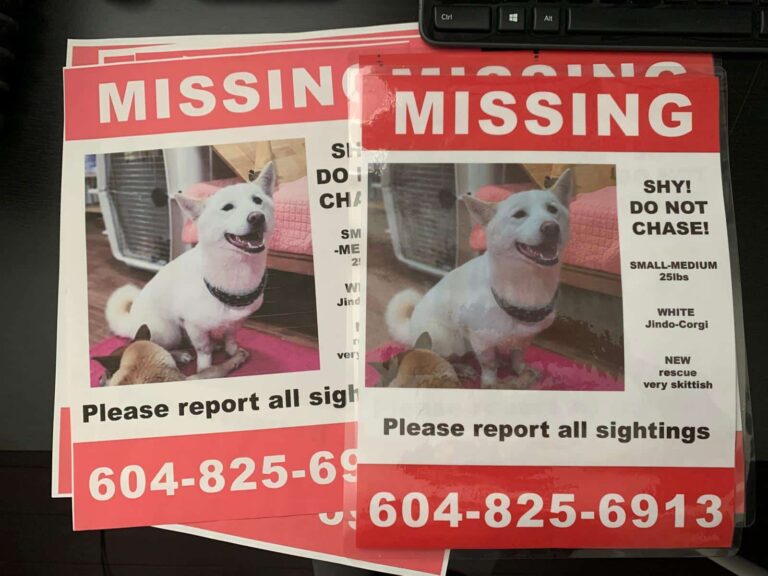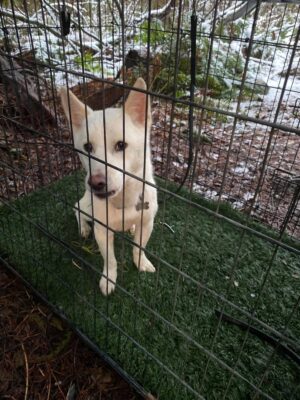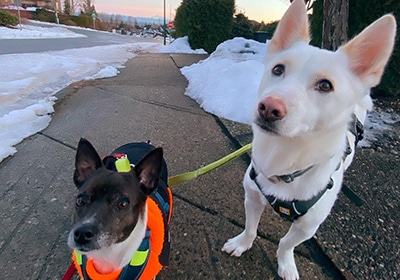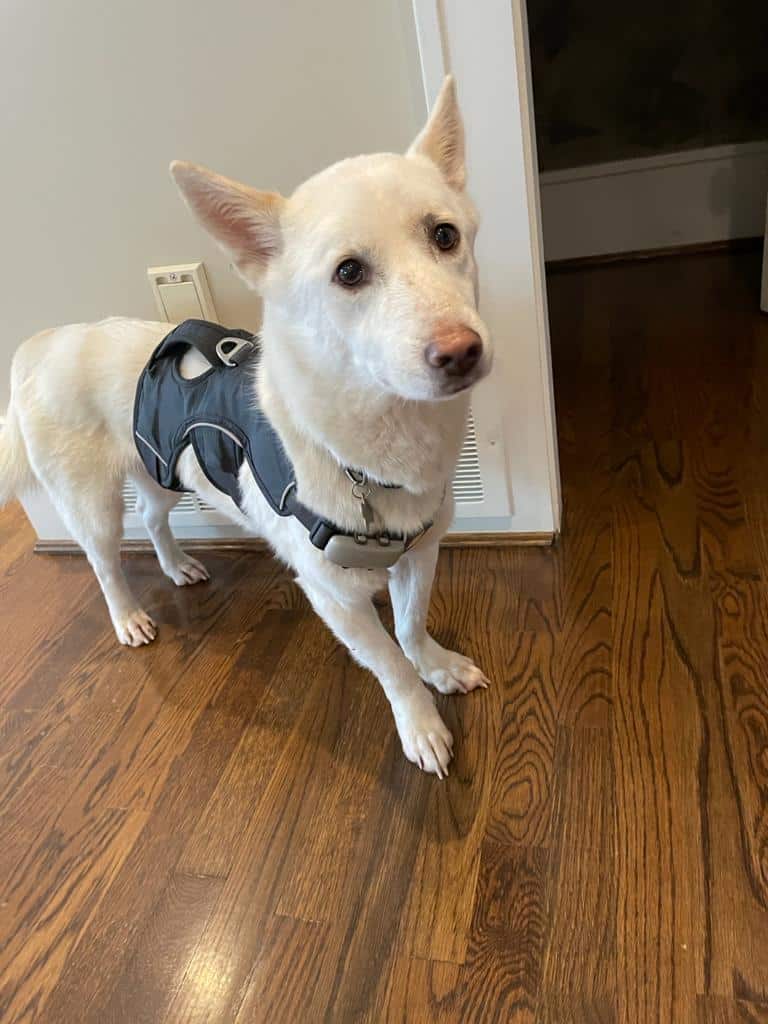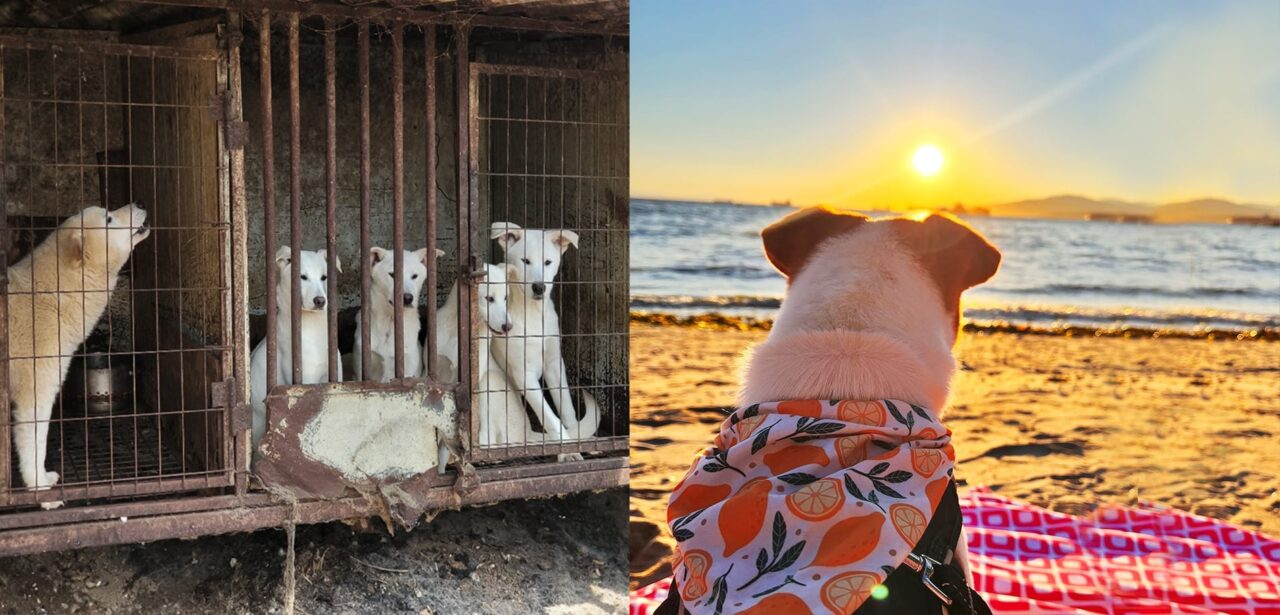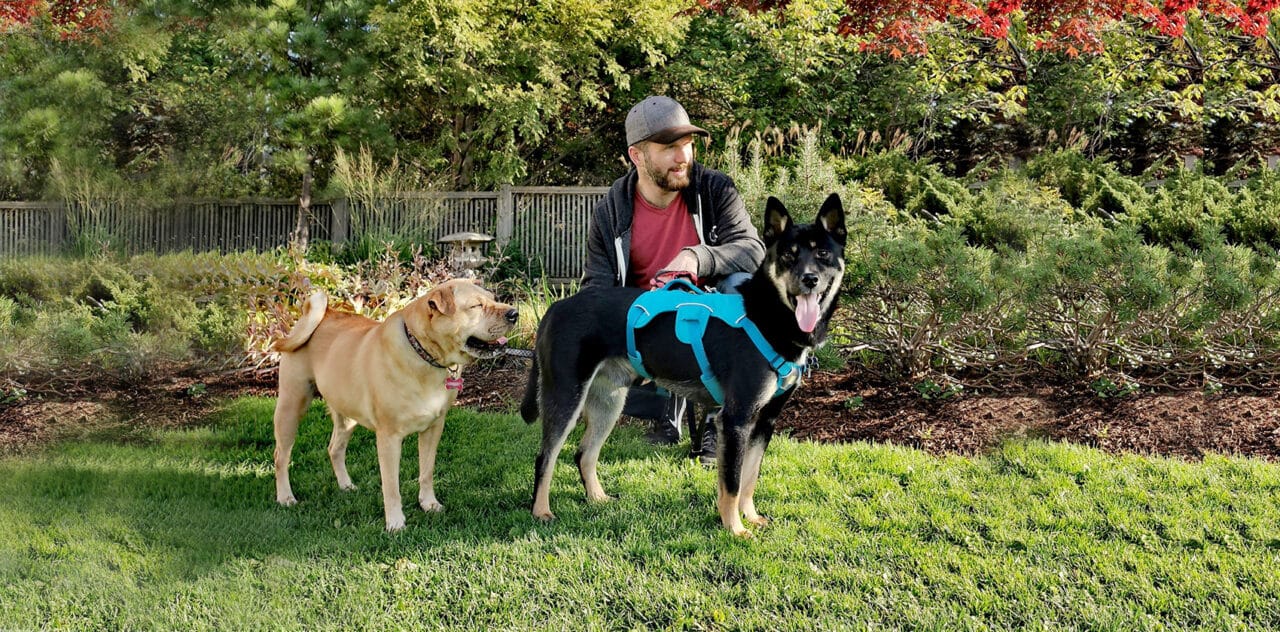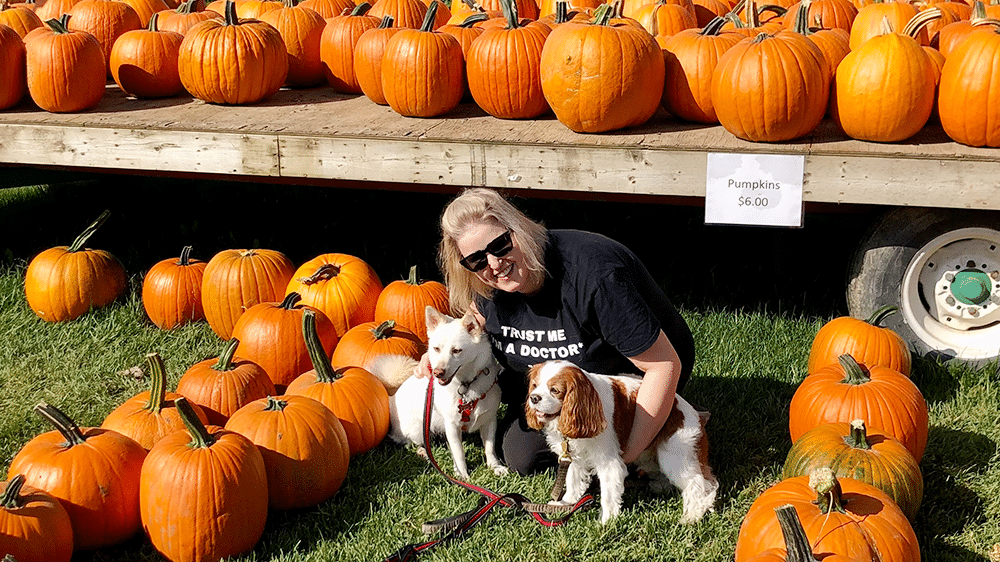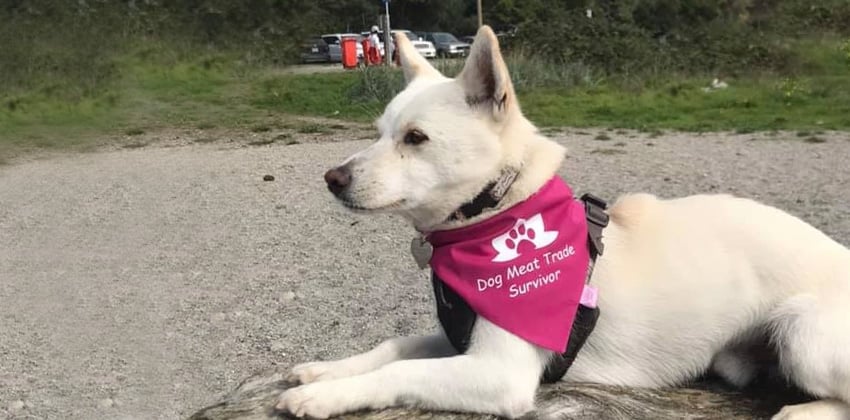Memoirs of a Lost Dog Part II: Chester’s Story
The following article includes links to specific brands of dog accessories/services. Free Korean Dogs was not commissioned to include these mentions and does not receive compensation from these companies. Opinions are entirely our own.
In recent months we have seen a surge in dog adoptions, which has been an incredible phenomenon to see a rise in the “adopt don’t shop” ideology. However, the unfortunate side effect of a higher volume of adoptions in the world of rescue has meant a higher probability of lost dog cases. We have been inundated with calls and messages with reports of missing dogs, asking if the dogs in question have come from our rescue. Thankfully, they have not, but it doesn’t mean those missing are any less important.
However, that is not to say we are perfect when it comes to lost dogs. We can never claim to be as we too have occasionally received calls from our adopters reporting lost dogs – from having dogs bolt out front doors, escaping from harnesses, squirming through loose fence boards in the yard, or losing hold of the leash – whether because owners lost their balance and accidentally dropped the leash, were distracted, or lost hold the leash when the dog suddenly broke into a sprint in pursuit of a squirrel.
Although we have worked hard to develop a safety protocol to prevent lost dog incidents to the best of our ability, in the end, we are all human and accidents happen. Through shared and learned experiences, we hope to further minimize occurrences and spare dog owners from the terrifying and heartbreaking experience.
Chester’s Story
Chester was the “classic” story of a newly arrived dog who escaped. Rescued from a man who raised him to be sold to the dog meat market in South Korea, he stayed at our partner shelter where he was given the time to decompress and allow us to assess his personality. Despite his tragic background, Chester was such a laid-back, go-with-the-flow type of boy, which was perhaps what led to his handlers letting their guard down. A few days after his arrival in Canada, a confused and disoriented Chester who was still processing all the changes he had undergone, wiggled out of his harness and bolted when taken outside for the first time to relieve himself. Within a fraction of a second, he was out of arms reach, and within minutes he was out of sight.
Despite an amazing group of volunteers who dedicated hours of their time to help, we knew the cards were stacked against us after the first few hours had passed. This was beyond our ability. Here we had a dog who had just arrived in a new country a mere few days ago. He had no bond with his humans, no sense of “home”, and was in maximal survival mode. We could have put up a million posters, received half a million sighting reports, and made everyone in the area aware, but the fact was that in his current state of mind, he would not readily approach anyone despite any degree of incentive. The only way we would be able to secure him was with the help of a professional dog tracker.
Calling in the Pros
We enlisted the help of Al of Pet Searchers Canada, who is not only a professional, but also understands the behaviors and patterns of lost dogs. In theory, anyone could set up closed-circuit cameras and live traps, but would likely find little success. Professional dog trackers like Al have a high degree of knowledge and understanding of the behavioral patterns of lost dogs, many of which require an approach unique to the individual circumstances and personality of the dog. This allows them to predict travel patterns in order to plan and execute the recovery process in the most effective and efficient manner.
11 Days Later
Our team of volunteers continued to assist with the search, lending their efforts through rain, snow, and shine to ramp up postering efforts and scout out sightings. No degree of effort was too little, and 11 days after his escape, we received a call from Al that Chester had entered a live trap and was safely secured. He must have known he was safe because, after some initial apprehension, he wagged his tail and almost seemed thankful to be found.
We were extremely thankful, too. While Chester’s story ended on a happy note, we don’t take it for granted. Some dogs are never recovered, leaving owners in a never-ending state of wondering. Other times, the closure owners receive are less positive – finding out their dog had been found deceased. In fact, we later learned from Al his cameras had picked up many sightings of coyotes circling the area. The area had known bobcat inhabitants, although we counted our blessings they never showed up on the footage nor did it seem Chester had any encounter with them or the coyotes. We credit the success of his recovery to quick action, the generosity of a community who stepped in to help, and of course, Al’s expertise.
It is Always Better to be Proactive vs. Reactive
Our safety equipment protocol system was developed with the understanding that not one single piece of equipment will be 100% successful in preventing escape. Hence, there are items in place to fill in any gaps and limitations of each one in hopes that it will maximize the safety of our dogs. Nonetheless, each incident brings us back to the drawing board to see how we improve our system. As they say, those who don’t learn from history are doomed to repeat it.
While we recognized the importance of being proactive with specific safety protocols in place, including the requirement of a specific harness and leash system, we realized we needed to fill the gap in between. What happens in those crucial moments when a dog is lost and you are scrambling to make posters, alert local shelters and vets, and head out to search?
It was after Chester’s incident we implemented the use of a GPS tracker into our system. Having the aid of such a device could have reduced our search time immensely and taken out the guesswork of what location he might be in, or have to rely on sighting reports to narrow down an area. Microchips and ID tags are great tools for lost dog recovery, but require close enough contact for someone to read their identification, or be able to secure them and physically get them to a vet to scan the microchipped. Neither would have been possible in Chester’s case.
LESSONS AND REFLECTIONS
A large part of our success was thanks to a dedicated group of volunteers who helped us (and Al) poster and give the case more exposure. Reflecting on our experience, we came to the realization we may not always have such an advantage. As they say, it takes a village. Rescue in any sphere or capacity depends greatly on the support of local volunteers. But as any organization expands, it takes time for this community to develop and grow. For areas where we still growing our presence, we wanted to make sure we took every precaution possible.
After exploring a number of options for tracking devices, we settled on a cellular network technology for the same reason. While people have adapted new technology such as Tiles and Apple air tags to track their pets, we found the limited range was simply not enough with these options using Bluetooth technology. Yes, you can still “find” your device when out of range with the help of others, but it is much easier if we can simply access all the information without having to rely heavily on a third party. The success of this model is also as good as the number of users – they depend on people who have the app on their phones and are sometimes further limited to users of a specific brand of phone. This makes it ineffective in areas with a smaller population or demographics where the technology is unpopular.
Other trackers using radio technology seemed more feasible as they didn’t rely on cellular technology and could therefore be used in more rural areas. However, despite having a longer range, it was still limited to 5km. After researching stories of dogs who had travelled much further, We needed something that would cast a wide net. Although this was not common, we didn’t want to take our chances. Nearly 100% of our missing dog cases happened in the greater metropolitan areas, usually from home or close to home. – because people didn’t think they would lose their dog. These are the areas where cellular networks are widely available for tracking with an unlimited range. Oftentimes, even our adopters in rural areas have cellular access.
SAFETY FIRST!
Lost dog incidents can be 100% preventable if we are prepared and alert. It doesn’t take much to take time to make sure GPS devices are charged, put on a secure harness, or use a hands-free leash. In fact, it is 110% worth it, because your dog is worth keeping safe.
Subscribe for Updates
Get our dogs in your inbox once a month, along with our latest news and events. We never send spam, and you can opt out at any time.
